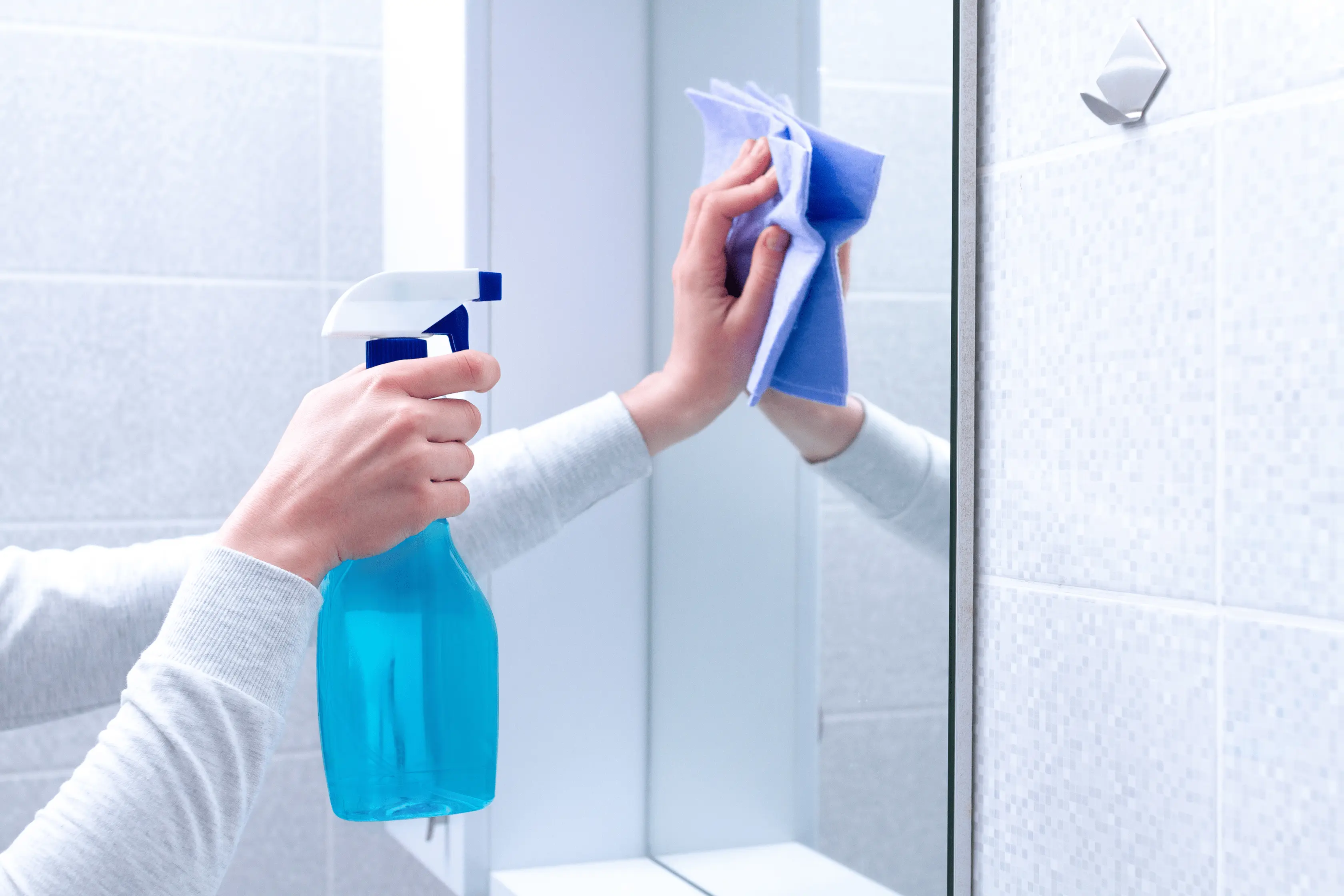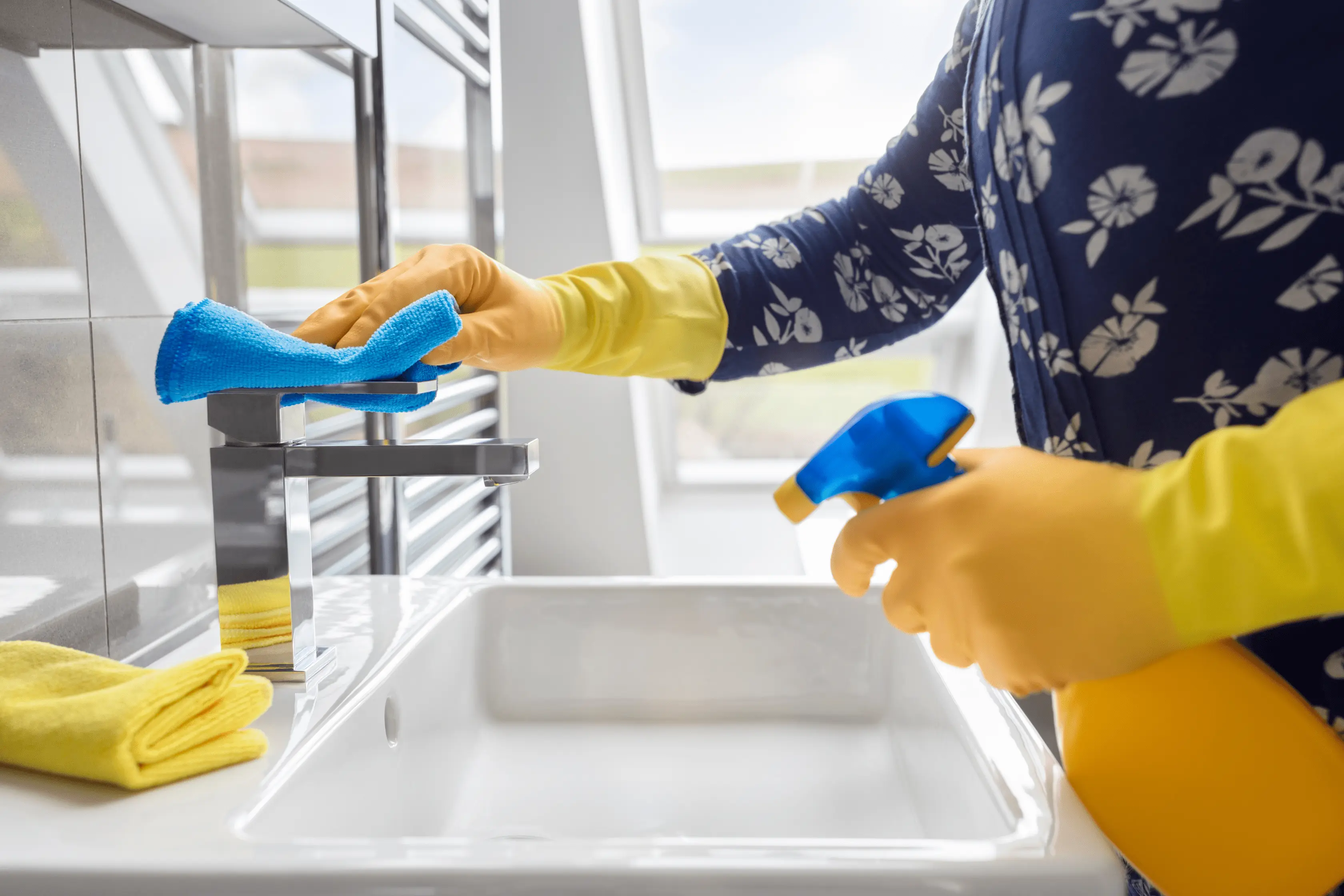Mould thrives in the warm, humid conditions of bathrooms, making it a common problem in home ensuites and bathroom spaces.
But how do you get rid of the bathroom mould?
Well luckily in this guide, our Bathroom Takeaway team has given you a simple rundown on the best way to remove mould and how to reduce mould in bathrooms in the future.
What Are The Types Of Mould In A Bathroom?
To keep it simple, if you are wanting to know how to avoid mould in a bathroom, it’s key to first know the 3 main types of moulds which are black, yellow and green mould. But what does each one mean?
Black Mould - If you come across black mould it’s important to know that it is a notorious health hazard, capable of causing respiratory issues and allergic reactions.
This aggressive fungus can infest a variety of materials, from food to bathroom surfaces, and even attack glass, metal, and stone.
Certain strains of black mould are particularly problematic, triggering breathing difficulties and allergic responses in those exposed. Read further below on how to how to get rid of black mould in bathroom spaces
Yellow Mould -If you see a Yellow colour mould this is known for releasing harmful fungal toxins.
Characterised by a dry, flaky texture, it commonly grows on food items like peanuts and corn. Due to its pale hue, this mould is frequently mistaken for limescale buildup in bathrooms or simply goes unnoticed.
Green Mould- Green mould commonly grows on food items, but can also spread throughout the home. This mould has the potential to produce toxic substances that pose risks to human health.

How To Get Rid Of Mould In Bathroom
When working out how to get rid of mould in the bathroom start by using a bleach solution, vinegar, or a commercial mould removal product to clean affected areas.
However, addressing the underlying moisture and ventilation problems is essential to prevent the mould from recurring which we will touch on below. Here is a quick breakdown to make the correct mixtures when removing different types of mould.
To Clean With Bleach:
- Firstly mix one part bleach with two parts water in a spray bottle.
- Spray the affected area and let it sit for 10 minutes.
- Then, scrub the area with a coarse brush or toothbrush to remove stubborn mould.
- Finally, rinse the area thoroughly with water.
To Clean With Vinegar:
- Spray distilled vinegar directly onto the mould.
- Let it sit in the area for approx 30 minutes.
- Scrub with a brush of your choice.
- Spray for a second time and leave for an additional 30 minutes.
- Then rinse it away with water.
To Clean With Commercial Bathroom Mould Remover Products
This will vary on the product so follow the direct instructions on the back (ensure plenty of ventilation)
How Can Mould In Bathrooms Be Prevented
Now you have removed the mould in your bathroom whether it’s in the shower or a corner of your bathroom, let’s look at the best ways you can prevent it.
Below are the top ways to prevent any further issues in the future.
- Proper Ventilation - Proper ventilation is key to preventing mold growth in the bathroom. Mold thrives in high humidity, regardless of temperature. To combat this, open the bathroom window fully for at least 10 minutes several times a day.
- Shower Curtains - Mold flourishes in the folds of a damp shower curtain. After showering, allow the steam to dissipate, then fully extend the curtain to eliminate any wrinkles.
- Towels On The Radiator Or Towel Radiator - Hang used damp towels on the radiator to dry them. Immediately place any damp sports gear directly into the washing machine as this can affect and promote build up overtime.
- Have A Grout Free Bathroom - Opting for a grout-free bathroom is an effective strategy for deterring mold growth. Smooth, easy-care materials in showers and tubs also reduce surface area where limescale and mold can accumulate, making these spaces simpler to clean.
- Keep The Bathroom Door Closed - Keeping the bathroom door closed helps prevent moist air from spreading to other rooms and creating ideal conditions for mold growth.
- Consider A Dehumidifier - Strategically place small, decorative sachets or ceramic boxes filled with salt to absorb excess moisture from the air.

FAQ
How Do You Get Rid Of Mould On Bathroom Sealant?
Unsure how to get rid of mould in bathroom sealant? Well simply remove mold from bathroom sealant, you can use white vinegar, bleach, or a commercially available mold remover as mentioned above it does not require anything different.
How Do I Get Rid Of Mould On Ceiling?
Are you wondering how to get rid of mould in bathroom ceiling tiles or just on the painted ceiling? Eliminating ceiling mold requires the right approach.
Use a diluted bleach solution, vinegar, or a commercial mold remover. Be sure to wear protective gloves and a mask during the cleaning process. For stubborn mold, employ a scrubbing brush and run a dehumidifier to deter future growth.
How Harmful Is Bathroom Mould?
If you leave the mould in your bathroom the effects will show on your respiratory health including coughing and throat irritation so it’s in a homeowners interest to clean that mould away.






















